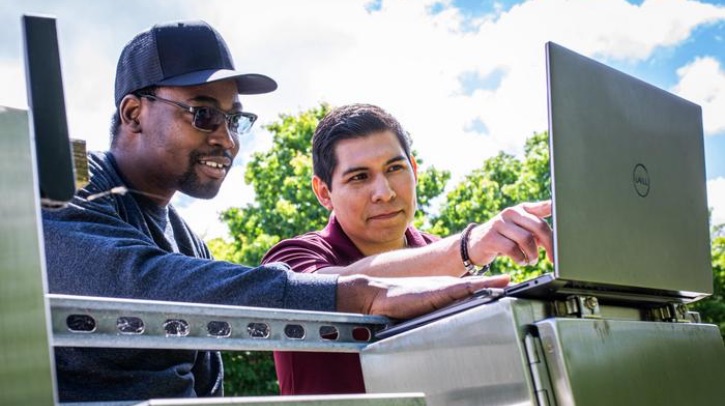A recent study published in Water Resources Research by civil and environmental engineering graduate student Samuel Daramola – along with faculty advisor David F. Muñoz and collaborators Siddharth Saksena, Jennifer Irish, and Paul Muñoz from Vrije Universiteit Brussel in Belgium – has introduced a deep learning framework to predict the rise and fall of water levels during storms – even in places where tide gauges fail or data is scarce – through a technique known as ‘transfer learning’.
This research was made possible by support from the National Science Foundation, CAS-Climate Program, and the Virginia Sea Grant Fellowship. The framework, called Long Short-Term Memory Station Approximated Models (LSTM-SAM), offers faster and more affordable predictions that enable smarter decisions about when to evacuate, where to place emergency resources, and how to protect infrastructure when hurricanes approach, the researchers said. It is expected to have applications for emergency planners, local governments and disaster response teams.
Predicting floods with transfer learning
LSTM-SAM analyzes patterns from past storms to predict water level rise during future storms. According to the researchers, what makes this model especially useful is its ability to extrapolate from one geographic area’s data to make predictions for another locale that doesn’t have a lot of its own data. By borrowing knowledge and applying it locally, it is expected to make accurate flood prediction more widely available than it has been under conventional physical-based models, due to their reliance on long-term data records and high-powered computers.
“Our goal was to create an efficient transfer learning method that leverages pre-trained deep learning models,” said Daramola. “This is key to quickly assessing many flood-prone areas after a hurricane.”
Testing with coastal flood predictions
The researchers tested LSTM-SAM at tide gauge stations along the Atlantic coast of the USA, a region frequently affected by hurricanes and other major storms. They found that the model was able to accurately predict the onset, peak and decline of storm-driven water levels. The model was even able to reconstruct water levels for tide-gauge stations damaged by hurricanes, such as the station in Sandy Hook, New Jersey, which failed during Hurricane Sandy in 2012.
Researchers plan on using the LSTM-SAM framework during the upcoming hurricane season, where they can test it as storms roll in near real time. They’ve also made the code available in the GitHub repository of the CoRAL Lab, where scientists, emergency planners and government leaders can download it for free. The program has been designed to run on a laptop in a matter of minutes so it can be helpful for smaller towns or regions in developing countries where access to high-end computing tools or detailed environmental data is limited.
“Other studies have relied on repetitive patterns in the training data,” Daramola said. “Our approach is different. We highlight extreme changes in water levels during training, which helps the model better recognize important patterns and perform more reliably in those areas.”
In related news, India’s Ministry of Earth Sciences (MoES) has recently begun exploring the integration of AI technologies into weather and climate forecasting systems and physics-based numerical models. Read the full story here



